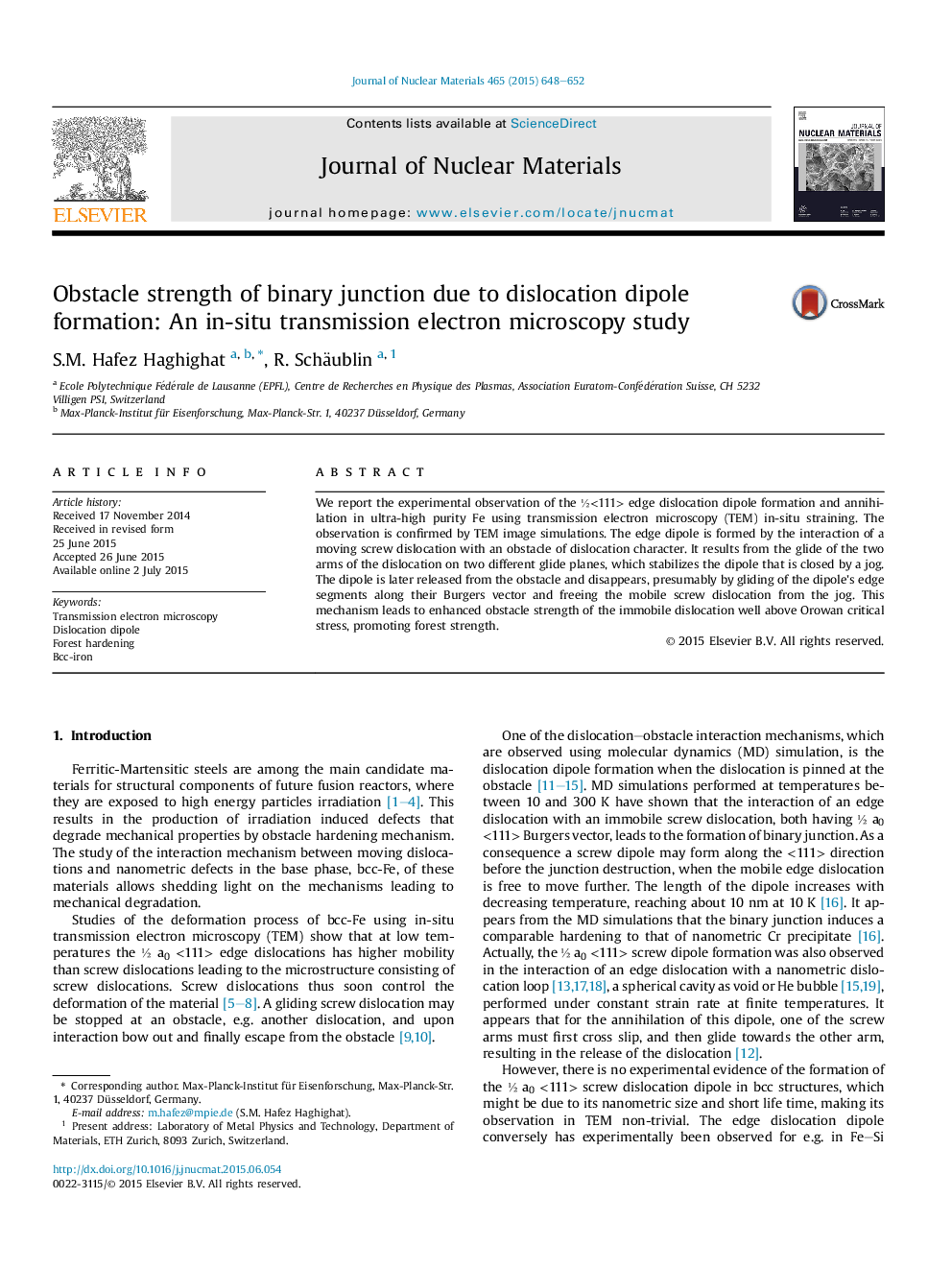| Article ID | Journal | Published Year | Pages | File Type |
|---|---|---|---|---|
| 7965518 | Journal of Nuclear Materials | 2015 | 5 Pages |
Abstract
We report the experimental observation of the ½<111> edge dislocation dipole formation and annihilation in ultra-high purity Fe using transmission electron microscopy (TEM) in-situ straining. The observation is confirmed by TEM image simulations. The edge dipole is formed by the interaction of a moving screw dislocation with an obstacle of dislocation character. It results from the glide of the two arms of the dislocation on two different glide planes, which stabilizes the dipole that is closed by a jog. The dipole is later released from the obstacle and disappears, presumably by gliding of the dipole's edge segments along their Burgers vector and freeing the mobile screw dislocation from the jog. This mechanism leads to enhanced obstacle strength of the immobile dislocation well above Orowan critical stress, promoting forest strength.
Related Topics
Physical Sciences and Engineering
Energy
Nuclear Energy and Engineering
Authors
S.M. Hafez Haghighat, R. Schäublin,
